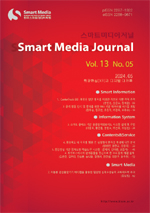
인적 특성을 반영한 안전 정보디자인의 개념과 특징
Concept and characteristics of safety information design that reflects human characteristics
- 한국스마트미디어학회
- 스마트미디어저널
- Vol13, No.8
- 2024.08
- 79 - 85 (7 pages)
디자인학에서 사고와 재해 방지에 관한 선행 연구는 많지만, 주로 시인성 개선을 위한 시각화 방안에만 초점이 맞춰져 있다. 대부분의 사고와 재해는 인적 요인에 의해 발생한다. 그러나 현재 위험 상황에서 발현되는 인적 특성을 고려한 디자인 연구는 거의 없다. 이에 본 연구에서는 인적 특성을 반영한 안전 정보디자인의 개념과 특징을 파악하고자 하였다. 사회과학 측면에서 위험과 안전의 개념을 고찰하고, 인지신경과학 측면에서 인간의 시지각 정보처리과정을 살펴보았다. 더불어 심리학 측면에서 위험상황에서 인간의 정보처리과정과 사고 발생률의 관계를 파악하였다. 이상의 내용을 토대로 기존 정보디자인과 안전 정보디자인의 차이점을 규명하고 궁극적으로 인적 특성을 반영한 안전 정보디자인의 특징을 파악하였다. 주요 발견점은 다음과 같다. 첫째, 위험 상황에서 이성적 판단이 중단될 가능성이 높은 인적 특성을 고려하여 정보를 제시해야 한다. 둘째, 위험 수준에 따라 주의를 적절히 분산시키거나 집중시키는 것은 피해를 최소화하는 기회 요소로 작용할 수 있다. 셋째, 위험·안전 정보디자인 분야에서는 감각적, 지각적 특성을 최우선으로 고려해야 함을 발견했다. 이상의 내용을 통해 안전 정보디자인에서 인적 특성을 반영한 디자인적 접근 방식이 궁극적으로 안전 수준 향상의 주요 지표가 될 수 있음을 파악했다.
In design studies, there has been extensive prior research on accident and disaster prevention, but it mainly focuses on visualization methods to improve visibility. Most accidents and disasters are caused by human factors. However, there is little design research that considers human characteristics that manifest in dangerous situations. This study aims to identify the concepts and characteristics of safety information design that reflects human traits. It examines the concepts of risk and safety from a social science perspective and looks into human visual information processing from a cognitive neuroscience perspective. Additionally, it explores the relationship between human information processing and accident rates in dangerous situations from a psychological perspective. Based on these analyses, the study distinguishes between conventional information design and safety information design, ultimately identifying the features of safety information design that incorporates human traits. The key findings are as follows: First, information should be presented considering the human tendency to suspend rational judgment in dangerous situations. Second, appropriately dispersing or concentrating attention according to the level of risk can serve as an opportunity to minimize harm. Third, it was found that sensory and perceptual characteristics should be given top priority in the field of risk and safety information design. Through these findings, the study concludes that a design approach that reflects human traits in safety information design can ultimately be a key indicator for improving safety levels.
Ⅰ. 서론
Ⅱ. 안전 정보디자인의 개념
Ⅲ. 안전 정보디자인의 정보처리과정
Ⅳ. 안전 정보디자인의 특징
Ⅴ. 결론
References